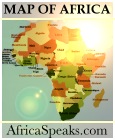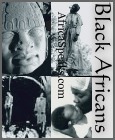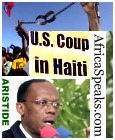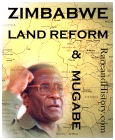Genocide of African-Colombians
Posted: Sunday, June 2, 2002by Willie Thompson, Jun 02, 2002
Choco, Colombia, South America, is the ancestral home of 18 million poor and marginalized African Colombians. On May 2, 302 people, 32 percent of the population of Bellavista, a town in Choco of more than 800 people, were killed, wounded or disappeared. Four other massacres have been committed against these small internally displaced African Colombians - at La Mejor Esquina, Machuca, El Naya and Baudo. These massacres reaffirm the charges by African Colombians that they have been targeted for physical and cultural genocide.
The Unified African Colombian Movement, in an email on May 9, says that the current massacre of African Colombians is related to the "massive abduction of women and men from Africa to be enslaved in the Americas." The enslavement of our ancestors, the report continues, "was one of the most abominable violations of human rights. ... Enslavement violated the right to life, to liberty, to the family, to sexuality, to religion and to the exercise of our right to think freely for ourselves."
The Movement believes that the world is witnessing the extermination of African Colombians, emphasizing that the "barbarities committed against civil society and the holocaust at Bojaya are historical war crimes that damage the consciousness and human dignity." This is a clear allusion to the United Nations' Final Resolution and Plan of Action that makes crimes against humanity actionable under the U.N. Charter.
These acts as well as the social and economic conditions of the African Colombians, which are worse now, 150 years after enslavement ended, deserve to be repudiated by the national and international communities. The Unified African Colombian Movement invited all institutions and the social and political groups throughout the country to convene on May 8, 2002, to demand an end to violence and the exclusion of the African Colombian population from the armed conflict. Further, the Movement demands that the United Nations Human Rights Commission against Racism be invited to Colombia.
A second email from an African Colombian about the massacre in Colombia states, "We have repeatedly asked the Congressional Black Caucus to collaborate with us and help us by dismantling Plan Colombia as an apparatus of war and to make greater social investments, especially in the most critical sectors." Plan Colombia is a multi-billion dollar United States aid package to Colombia which goes mostly to the anti-African Colombian military and paramilitary,
"We hope this year," continues the report from an African Colombian professional, "that we are able to attend the meeting of the Congressional Black Caucus (in September 2002) in order to expose the desperate situation in which we live. As leaders, members of civil societies, academics, artists and sports persons, we expect more than solidarity and compromise."
This message ends in tears: "Dear Willie, forgive my language today, but my tears gush forth from the futility of our protest. We survive day by day."
African Colombian leaders meeting recently in Bogota, Colombia, declared 2002 the year for African Colombian unity. They are demonstrating to their country and the international community that African Colombians can work together, that they agree on the proposals for meeting the needs of the African Colombian community and that their differences will be dealt with by themselves.
Most African Colombians live in the green and hot regions of the coast and the inter-Andean valleys. Two of the principal areas are the Caribbean region, including Guajira, Magdalena, Atlantico, Bolivar, Cordoba, Antioquia and the islands of San Andres and Providencia, and the Pacific Coast, including Choco and the Coastal Zones of the Departamiento del Valle del Cauca, Cauca and Narino. (See "El Negro en Colombia" by Alquilles Escalante, July 1964, Sociology Faculty of the National University of Colombia.)
This becomes important because of the violence that has been taking place in Colombia since about 1946, when the Conservative Party halted the liberal land and other reforms of the 1930s. The violence has taken 200,000 lives, and 2 million Colombians have emigrated or been displaced, according to the Spring 2002 edition of Inside CLAS, a publication of UC Berkeley’s Center for Latin American Studies.
The CLAS publication also quotes Mary Roldan, professor of history at Cornell, whose research established that African Colombians are concentrated in areas neighboring Antioquia. Antioquia itself, Roldan says, which was hard hit by violence from 1946 to 1957, is a wealthy population center. It self identifies as "white and hard working, legitimately married, religiously devout and politically conservative." The peripheral area, which includes Choco, is identified by others as racially inferior to the Antioquian "white ideal." This is the area of Bellavista where the Catholic church was bombed on May 2, killing, wounding and scattering 302 African Colombians
Enslaved African Colombians mined the gold and silver and produced the agricultural products of Colombia. It was said that much smaller groups of Africans were more useful in mining than 1,500 Indians. According to Escalante (page 121), half-nude Blacks lashed by the enslaver’s whip were the base of the colonial economy.
Today, says Professor Roldan, the extractive industries of logging, gold mining and oil, plus capital intensive cattle ranching and commercial agriculture, are concentrated in the towns peripheral to Antioquia. In addition, Antioquia’s access to the Caribbean Sea and the Magdelana River are through the peripheral towns.
These towns have had little investment from the government. Having no police, army or customs officers, they suffer violence at the hands of armed bands hired by both liberals and conservative extremists. The bands prey on workers and poor settlers. Certain sectors of the regional government spearhead violence to achieve political control over historically uncooperative and politically left-leaning populations, Inside CLAS reports (page 12). They deploy police and paramilitary forces to remove locally elected authorities from office and recalcitrant populations from strategic areas.
Liberal groups or guerillas have come to resist the increasing number of official and paramilitary forces. In Western and Eastern Antioquia, state agents or paramilitary groups, endorsed by regional governments, instigate local disorder.
Sociology Professor Emeritus Willie Thompson, a member of the Program Council of KPFA Radio 94.1 FM and the Malcolm X Chapter of N’COBRA, is on the steering committee for the Millions for Reparations March in Washington, D.C., on Aug. 17.Printer friendly version
Send page by E-Mail

Previous Page | Zimbabwe Watch | Historical Views | Home
NOTICE: All articles are the copyright property of the writers. In accordance with Title 17 U.S.C., section 107, some material on this site is provided without permission from the copyright owner, only for purposes of criticism, comment, scholarship and research under the "fair use" provisions of federal copyright laws. Visit: http://www.law.cornell.edu/uscode/17/107.shtml for more details. If you wish to use copyrighted material from this site for purposes of your own that go beyond 'fair use', you must obtain permission from the copyright owner.










